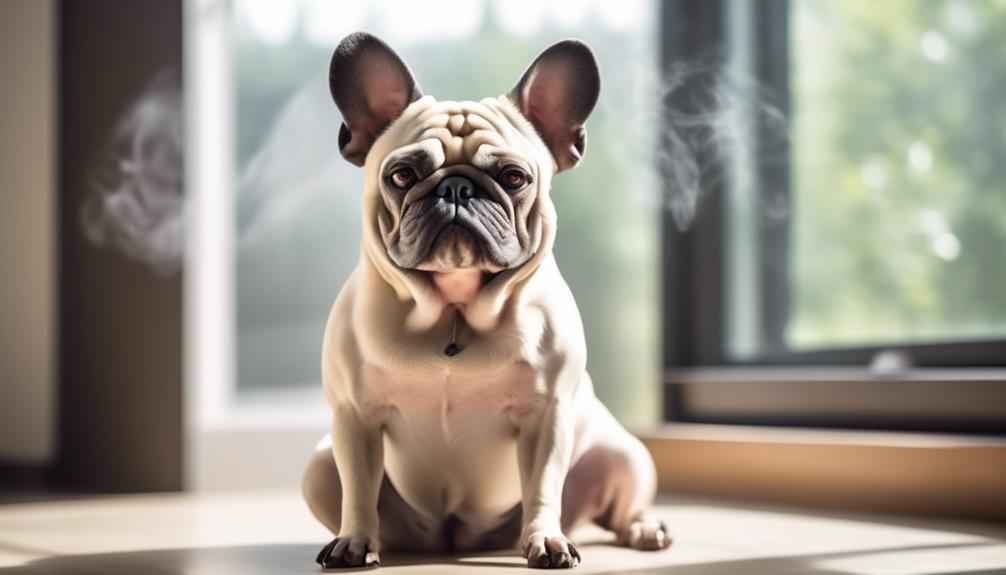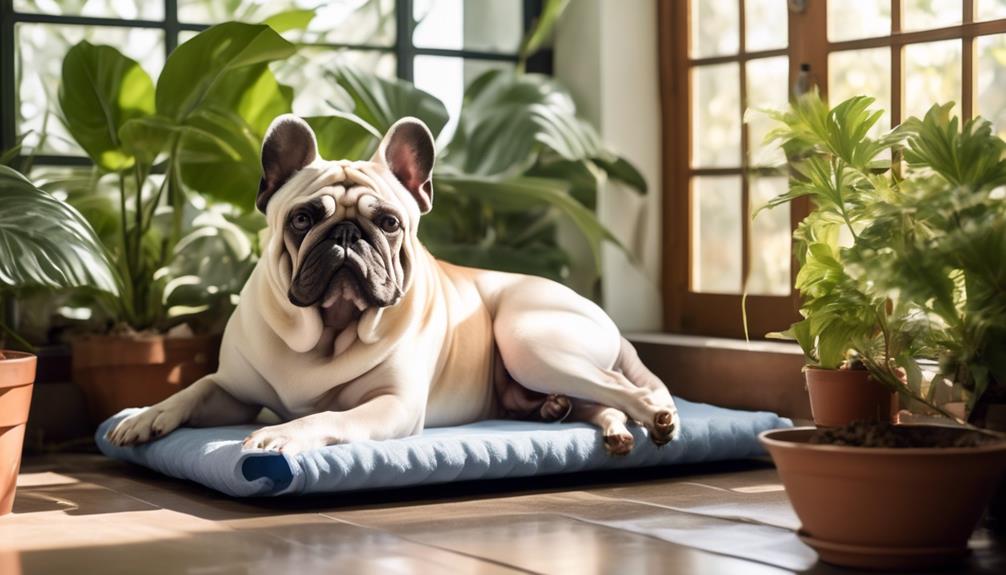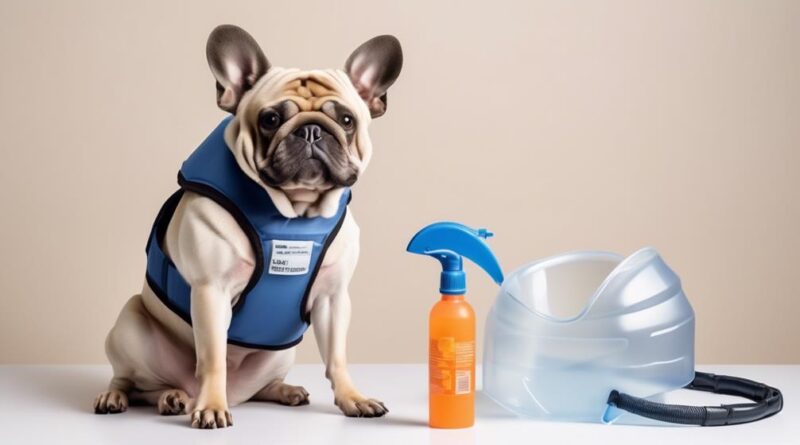What Are the Best Ways to Prevent Heatstroke in Brachycephalic Breeds?
If you've ever felt like you were walking on eggshells when it comes to keeping your brachycephalic breed safe from heatstroke, you're not alone. As a pet owner, it's crucial to understand the unique challenges these breeds face in hot weather.
But fear not, there are effective ways to safeguard your furry friend from the dangers of overheating. By implementing a few simple yet strategic measures, you can significantly reduce the risk of heatstroke in your brachycephalic companion.
So, how can you ensure your pet stays cool and comfortable during the sweltering heat?
Understanding Brachycephalic Breeds
Understanding brachycephalic breeds is essential for recognizing the specific health risks and needs associated with these types of dogs. Brachycephalic breeds are characterized by their short muzzles, flat faces, and compressed airways. These unique breed characteristics can lead to a range of health issues, including brachycephalic obstructive airway syndrome (BOAS), heat intolerance, dental problems, and respiratory difficulties. Due to their distinctive anatomy, brachycephalic breeds are more prone to experiencing heatstroke, which can be life-threatening if not addressed promptly.
Brachycephalic health is a major concern for owners of these breeds. Their shortened airways make it harder for them to regulate their body temperature, especially in hot and humid conditions. Additionally, their compacted facial structure can impede normal breathing, exacerbating the risk of heatstroke. It's important to be aware of the signs of heatstroke, such as excessive panting, drooling, lethargy, and disorientation, in order to provide immediate care and prevent further escalation of the condition.
When caring for brachycephalic breeds, it's crucial to take proactive measures to prevent heatstroke. This includes avoiding strenuous exercise in hot weather, providing access to cool and shaded areas, and ensuring they've an ample supply of fresh water. Furthermore, never leave them unattended in a car, as they're particularly susceptible to heatstroke in confined spaces.
Identifying Signs of Heatstroke
Recognize the signs of heatstroke in brachycephalic breeds by observing for excessive panting, drooling, lethargy, and disorientation, as prompt identification is crucial for timely intervention. Brachycephalic breeds, such as Bulldogs, Pugs, and French Bulldogs, are particularly susceptible to heatstroke due to their shortened airways and inability to regulate their body temperature as effectively as breeds with longer muzzles. It's vital to be attentive to potential symptoms, as heatstroke can rapidly escalate and become life-threatening.
Excessive panting is one of the initial signs of heatstroke in brachycephalic breeds. If your dog is breathing rapidly and heavily, especially in hot weather or after exercise, it could be a warning sign. Additionally, watch out for excessive drooling, as this can indicate that your dog is struggling to cool down. Lethargy and weakness are also common symptoms. If your dog appears unusually tired or unwilling to move, it may be a sign of heatstroke. Moreover, disorientation or confusion can manifest, with your dog appearing dazed or unresponsive.
If you suspect heatstroke, immediate action is crucial. Move your dog to a cool, shaded area and offer small amounts of water. Avoid using ice-cold water, as this can constrict blood vessels and hinder the cooling process. Wet your dog with cool water and use a fan to promote evaporation. Contact a veterinarian immediately, as heatstroke requires professional intervention. Remember, swift recognition and emergency response are essential in preventing serious complications from heatstroke in brachycephalic breeds.
Providing Adequate Ventilation

If your brachycephalic breed is spending time in a confined space, ensure that it's well-ventilated to prevent overheating. Brachycephalic breeds, such as Bulldogs, Pugs, and Boxers, are more susceptible to heatstroke due to their unique respiratory anatomy. Adequate air circulation is crucial in preventing overheating and providing respiratory support for these breeds. When designing their living spaces or crates, prioritize ventilation to help them stay cool and comfortable.
To enhance air circulation, consider using cooling accessories such as fans or air conditioning units in the areas where your brachycephalic pet spends time. These devices can help maintain a comfortable temperature and promote airflow, reducing the risk of overheating. Additionally, placing your pet's crate or bed in a well-ventilated area can further improve air circulation and prevent the buildup of heat.
It's important to be mindful of the signs of breathing difficulties in brachycephalic breeds, as these can indicate inadequate ventilation. Watch for symptoms like noisy or labored breathing, excessive panting, and restlessness, as these may signal that your pet is struggling to breathe comfortably. If you notice any of these signs, it's essential to seek veterinary care promptly.
Managing Exercise and Activity
To ensure the well-being of your brachycephalic pet in avoiding heatstroke, it's important to carefully manage their exercise and activity levels, taking into account their unique respiratory needs. Brachycephalic breeds, such as Bulldogs, Pugs, and French Bulldogs, have inherent challenges with heat tolerance due to their shortened airways. Exercise management is crucial to prevent heatstroke in these breeds. It's essential to understand that they've limited ability to cool themselves through panting, which is the primary way dogs dissipate heat. As a result, these breeds are more susceptible to overheating during physical activity.
When managing exercise and activity for brachycephalic breeds, it's important to modify their activities based on breed-specific limitations. This involves being mindful of the duration and intensity of exercise. Shorter, more frequent walks are preferable to prolonged periods of activity. Avoid strenuous exercise during hot weather, and opt for early morning or late evening walks when temperatures are cooler. Additionally, consider indoor activities or swimming as alternatives to outdoor exercise during hot days.
Furthermore, it's crucial to be attentive to signs of heat stress during any physical activity. Symptoms such as excessive panting, difficulty breathing, disorientation, or collapse are indicators that your brachycephalic pet may be struggling with the heat. If these signs are observed, it's important to immediately move the pet to a cooler environment, offer water, and seek veterinary attention if the symptoms persist.
Creating a Cool Environment

Consider creating a cool environment by providing shaded areas and adequate ventilation for your brachycephalic pet, ensuring they've a comfortable space to relax and cool down. Brachycephalic breeds are more prone to heatstroke due to their shortened airways, making it essential to create a cool and comfortable environment for them.
One effective way to help them stay cool is by using cooling mats in their favorite resting spots. These mats are designed to absorb and dissipate heat from your pet's body, providing a cool surface for them to lie on. Additionally, ensure that your pet has access to shaded areas, whether it's indoors or outdoors, to escape the direct heat of the sun.
Another crucial aspect of creating a cool environment is to provide proper hydration for your brachycephalic pet. Place multiple water bowls in different areas of your home and refill them regularly with fresh, cool water. Encouraging your pet to drink water frequently is vital in preventing heatstroke. Additionally, consider using elevated water bowls, as this can help brachycephalic breeds to drink more comfortably due to their unique facial structure.
Furthermore, ensure that there's adequate ventilation in your home, especially during hot weather. This can help in regulating the temperature and air quality, providing a more comfortable environment for your pet.
Hydration and Water Access
Ensuring your brachycephalic pet has access to ample fresh, cool water is essential in preventing heatstroke and maintaining their well-being in hot weather. Proper hydration is key to helping your pet regulate their body temperature and avoid heat-related illnesses. Here are some essential tips to ensure your brachycephalic pet stays well-hydrated:
- Accessible Water Sources: Make sure there are multiple water bowls placed in different areas of your home and outdoor space, ensuring your pet can easily access water wherever they are.
- Frequent Water Checks: Check and refill your pet's water bowls regularly throughout the day, especially during hot weather, to ensure they always have an adequate supply of fresh, cool water.
- Portable Water: When taking your brachycephalic pet for walks or outings, carry a portable water bowl and a bottle of water to offer them regular drinks, keeping them hydrated while on the go.
- Hydrating Treats: Consider providing your pet with hydrating treats such as ice cubes made from diluted low-sodium broth or frozen fruits, offering a refreshing way to increase their water intake.
- Shade and Water: When outdoors, ensure there are shaded areas where your pet can rest, and always provide access to water to prevent dehydration and overheating.
Avoiding High Temperatures

Make sure your brachycephalic pet is kept in cool, well-ventilated areas to avoid high temperatures and reduce the risk of heatstroke. When the weather is hot, it's crucial to employ effective cooling techniques. Provide your pet with access to air-conditioned rooms, fans, or cooling mats to help regulate their body temperature. Additionally, consider using frozen water bottles wrapped in towels for them to lean against. These measures can significantly aid in preventing heat-related issues.
Shade options are also essential in avoiding high temperatures. Whether your pet is indoors or outdoors, ensure they've access to shaded areas. When outside, use umbrellas, canopies, or trees to create shady spots. Indoors, make use of curtains or blinds to block out direct sunlight. Furthermore, take advantage of cooler times of the day for outdoor activities, such as early mornings or evenings, and limit outdoor time during peak heat hours.
Always be mindful of the signs of overheating, such as excessive panting, drooling, or weakness. If you suspect your brachycephalic pet is struggling with the heat, take immediate action by cooling them down with damp towels and contacting your veterinarian. By implementing these strategies, you can help your brachycephalic pet stay comfortable and safe in high temperatures, reducing the risk of heatstroke.
Seeking Veterinary Care
To ensure the well-being of your brachycephalic pet during hot weather, it's crucial to be attentive to signs of overheating and promptly seek veterinary care if you observe any concerning symptoms such as excessive panting, drooling, or weakness. Heatstroke in brachycephalic breeds can escalate rapidly, so quick action is essential to prevent further complications.
Here's what you should do when seeking veterinary care for a heatstroke emergency:
- Stay Calm: Keep a calm and composed demeanor to help reassure your pet, as they may already be distressed.
- Call Ahead: Contact your veterinarian or an emergency pet clinic before arriving to ensure they're prepared for your pet's arrival.
- Provide Details: Be ready to provide details about your pet's symptoms, the duration of exposure to heat, and any first aid measures you've taken.
- Follow Instructions: Follow any first aid instructions provided by the veterinary staff while en route to their facility.
- Be Prepared for Treatment: Understand that your pet may require immediate intervention such as intravenous fluids, cooling measures, and careful monitoring to address heatstroke.
Remember that swift action is critical in a heatstroke emergency. By seeking prompt veterinary care, you can significantly improve the chances of your brachycephalic pet's recovery and prevent potentially life-threatening consequences.
Frequently Asked Questions
Can Brachycephalic Breeds Participate in Outdoor Activities in Hot Weather?
In hot weather, brachycephalic breeds should avoid strenuous outdoor activities to prevent heatstroke. Use cooling products and gear, and consider training for heat tolerance. Factor in dietary considerations to prevent long-term effects.
Are There Specific Cooling Products or Gear That Can Help Prevent Heatstroke in Brachycephalic Breeds?
When it comes to preventing heatstroke in brachycephalic breeds, it's essential to consider using cooling vests and mats. These products can help regulate your pet's body temperature, keeping them safe during hot weather activities.
How Can I Train My Brachycephalic Breed to Tolerate Heat Better?
To train your brachycephalic breed to tolerate heat better, focus on behavioral training and use cooling techniques like providing shade, using cooling mats, and offering plenty of fresh water. Gradually expose them to heat to build tolerance.
Are There Any Specific Dietary Considerations That Can Help Prevent Heatstroke in Brachycephalic Breeds?
To prevent heatstroke in brachycephalic breeds, it's essential to be mindful of their hydration requirements and exercise limitations. Ensuring they have access to plenty of water and avoiding strenuous activities during hot weather can help prevent heat-related issues.
What Are the Potential Long-Term Effects of Heatstroke on Brachycephalic Breeds?
To prevent heatstroke in brachycephalic breeds, it's crucial to keep them cool, avoid strenuous exercise in hot weather, and provide plenty of water. Potential complications from heatstroke include organ damage, and long-term management involves monitoring for respiratory problems.
Conclusion
In conclusion, preventing heatstroke in brachycephalic breeds requires understanding their unique needs and identifying signs of heatstroke. Providing ventilation and managing activity levels can help prevent overheating. Creating a cool environment and ensuring hydration are also important steps in preventing heatstroke. Additionally, it is important to avoid exposing brachycephalic breeds to high temperatures and seek veterinary care when necessary. By taking these steps, you can help keep your brachycephalic pet safe and comfortable in hot weather.
